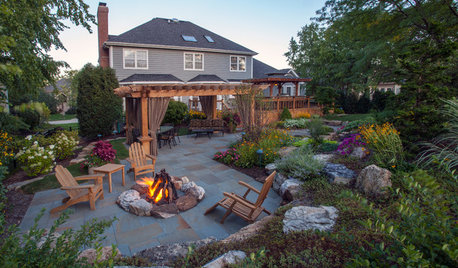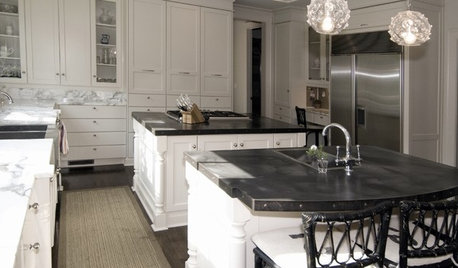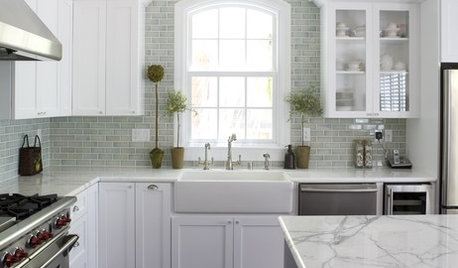Economical heating mat alternative
Don V Zone 5-6 Cleveland OH
6 years ago
Featured Answer
Sort by:Oldest
Comments (27)
digdirt2
6 years agoRelated Discussions
Newbie question...alternatives to heating mats for starting seed
Comments (12)I agree with mandolls....fluorescents don't put out much heat compared to incandescent, but it still puts out noticeable heat which surprised me. I am also a newbie and need to invest in a soil thermometer, but I can tell by experience so far that the shelf I added immediately above my top tier 4' 2 bulb fluorescent light fixtures stays a nice comfortable "warm" and has been perfect for germinating all manner of vegetables so far. You could even box in (or just tent it with plastic) the area above the light and it would become even warmer but that's not necessary for my setup inside the house where the air temp is usually 70-75 anyway. With a cooler basement setup you may want to build a sort of grow box to trap more of the heat rising from the light fixture as your germination station. Now I've just planted daylily seeds on the rack to germinate so we'll see how they do but I expect good results. Good luck with your seed starting!...See MoreAlternative to seedling mat--incandescent bulbs under trays?
Comments (8)Kris, that was really inventive! And I got a good giggle out of the name of your blog, because my name is, in fact, Melissa! Thank you for sharing your info with us. I went ahead and bought the seedling heat mat because I don't have the time or creative resources these days to build something from scratch (*sadly shaking head*), and I found a decent deal on eBay. I also found the perfect spot in my laundry room for starting seeds, because it offers a light-hanging spot that's just the right size and involves no building, so I had to let the incandescent idea go too. It's OK, though, because the spot (under a work table, right by the outlets, out of the way of the laundry) is so perfect that it will make everything else so much easier! Thanks for all ideas and discussion, everyone. I've ordered my mat, light setups, and seeds, and now I'm getting ready to start germinating in a week or so!...See MoreSeed mats for bottom heat
Comments (6)I use heating cables under the tables in the GH and that's a much more economical way to go but I can't use them in the house. Do you use the tape in your house or the GH? I've had a few Hydrofarm mats that have proven to be pretty low quality and another whose maker I can't remember that's marginally better. My commercial heavy rubber mat is at least 8 years old and works great but takes up so much space. I don't need 18 sq ft of bottom heat inside but did want more space then the average mat had. These Ultratherms came in a nice range of sizes and so far I'm really happy with it. The heaters made for reptile cages seem to be a better quality then the ones made by Hydrofarm and the like. I have a few small heat mats in my gecko cages and haven't replaced them in 7 years. BTW the Ultrathem mats are a few dollars less expensive when you go thru Amazon as opposed to going directly to the Bean Farm. I paid $30 and the same size is $33 direct....See MoreElectric underfloor heating mats in kitchen?
Comments (12)Maren- The answer to your question depends on how your house is built. If the garage is not heated, what you need to do is insulate any shared walls it has with the living space. If it's unheated and you only insulate exterior walls of the garage, then heat from the interior makes its way to the garage and is costing you money; exterior wall insulation in the garage slows that heat and money loss down some, but you are still unnecessarily using the heat you want to keep in the living space to heat the garage. Basically imagine your house without the garage: the walls, floor and ceiling that remain are the areas you want to insulate. You want to create an "envelope" that surrounds all sides of the living areas that you want to keep warm. Does that make sense?...See Moredaninthedirt (USDA 9a, HZ9, CentTX, Sunset z30, Cfa)
6 years agolast modified: 6 years agoDon V Zone 5-6 Cleveland OH
6 years agoDon V Zone 5-6 Cleveland OH
6 years agorgreen48
6 years agoDon V Zone 5-6 Cleveland OH
6 years agodigdirt2
6 years agorandy41_1
6 years agoDon V Zone 5-6 Cleveland OH
6 years agodaninthedirt (USDA 9a, HZ9, CentTX, Sunset z30, Cfa)
6 years agolast modified: 6 years agoDon V Zone 5-6 Cleveland OH
6 years agodaninthedirt (USDA 9a, HZ9, CentTX, Sunset z30, Cfa)
6 years agolast modified: 6 years agorgreen48
6 years agolast modified: 6 years agorgreen48
6 years agolast modified: 6 years agorgreen48
6 years agolast modified: 6 years agorgreen48
6 years agolast modified: 6 years agodaninthedirt (USDA 9a, HZ9, CentTX, Sunset z30, Cfa)
6 years agolast modified: 6 years agorgreen48
6 years agolast modified: 6 years agoDon V Zone 5-6 Cleveland OH
6 years agorgreen48
6 years agolast modified: 6 years agoDonInFLX (NY, 6a)
6 years ago
Related Stories

FLOORSIs Radiant Heating or Cooling Right for You?
Questions to ask before you go for one of these temperature systems in your floors or walls (yes, walls)
Full Story
FLOORSWhat to Ask When Considering Heated Floors
These questions can help you decide if radiant floor heating is right for you — and what your options are
Full Story
BATHROOM DESIGNWarm Up Your Bathroom With Heated Floors
If your bathroom floor is leaving you cold, try warming up to an electric heating system
Full Story
FLOORSFloors Warm Up to Radiant Heat
Toasty toes and money saved are just two benefits of radiant heat under your concrete, wood or tile floors
Full Story
GARDENING AND LANDSCAPING3 Ways to Bring the Heat to Outdoor Living Spaces
Here’s what to know about surviving winter’s bite with an outdoor fireplace, fire pit or heat lamp
Full Story
KITCHEN COUNTERTOPSKitchen Countertop Materials: 5 More Great Alternatives to Granite
Get a delightfully different look for your kitchen counters with lesser-known materials for a wide range of budgets
Full Story
GREAT HOME PROJECTSHow to Add a Radiant Heat System
Enjoy comfy, consistent temperatures and maybe even energy savings with hydronic heating and cooling
Full Story
KITCHEN STORAGE11 Space-Savvy Alternatives to Wine Cellars
Don't be crushed without a dedicated room for your grape varietals. Store and display your wine the creative, budget-friendly way
Full Story
KITCHEN DESIGN13 Alternatives to Plain Wood Flooring in the Kitchen
Graphic patterns, surprising transitions and unexpected materials make these kitchen floors stand out
Full StorySponsored
Your Custom Bath Designers & Remodelers in Columbus I 10X Best Houzz




wildhaven